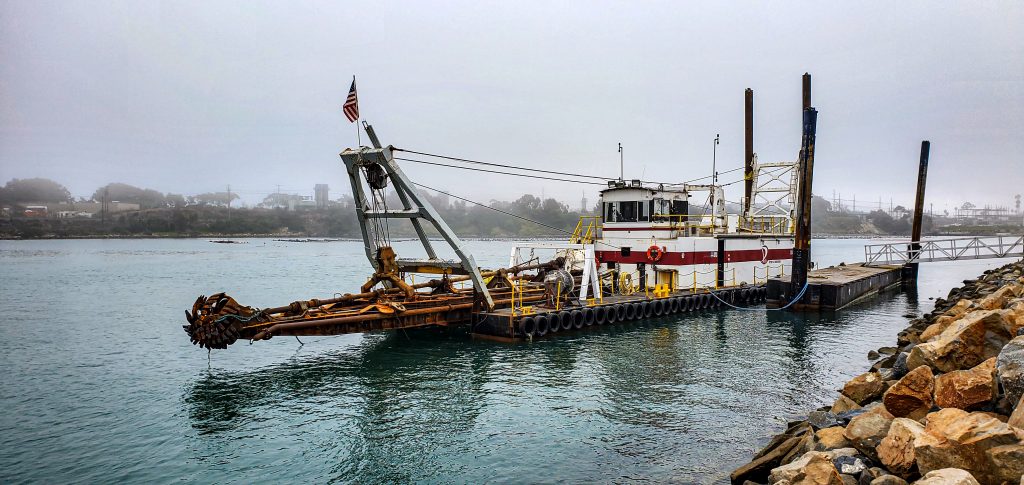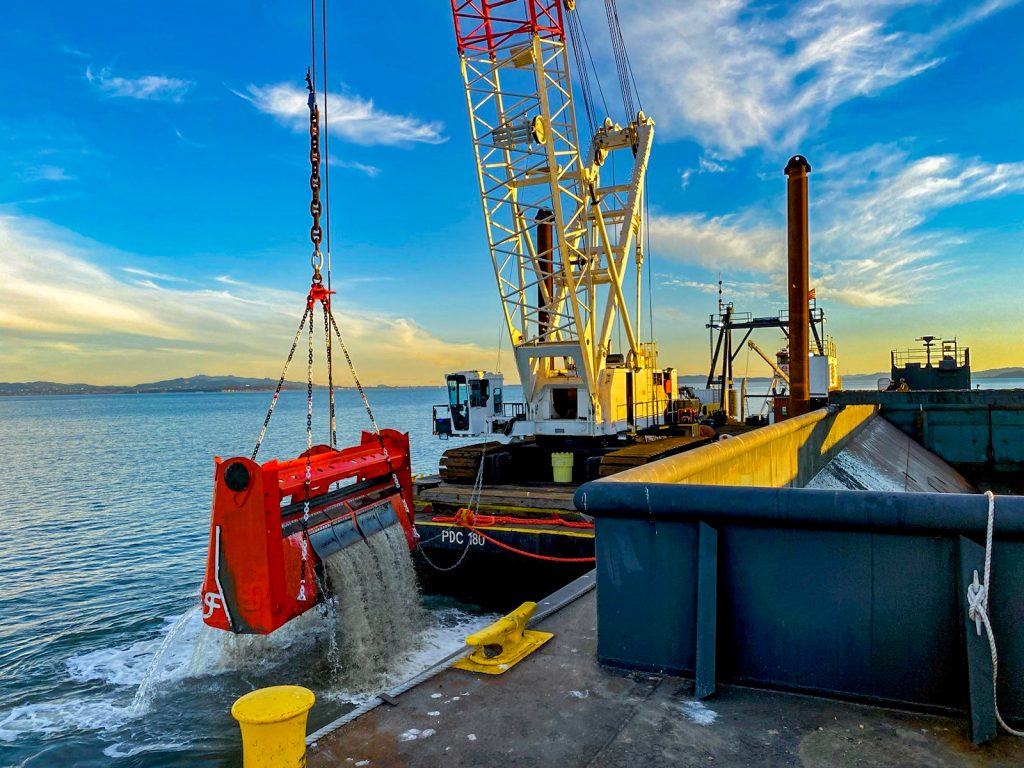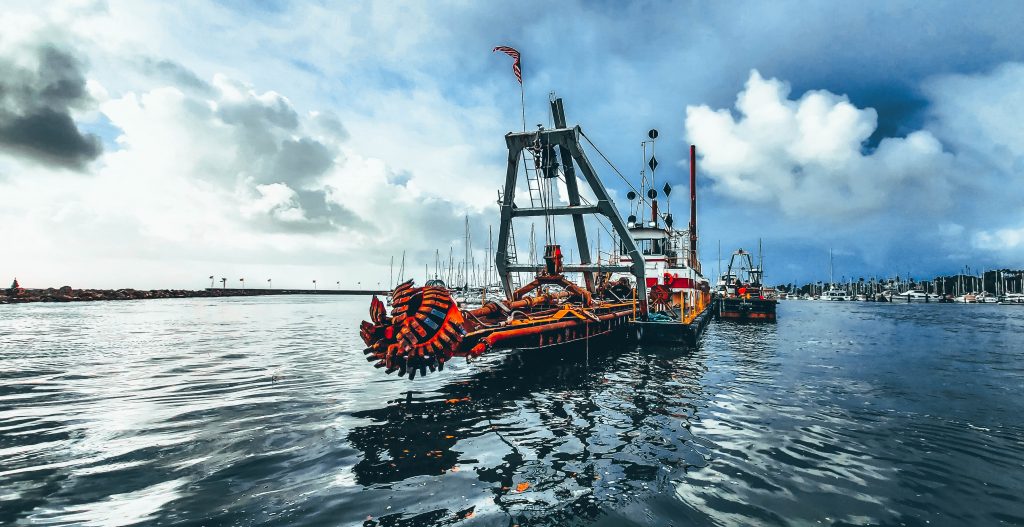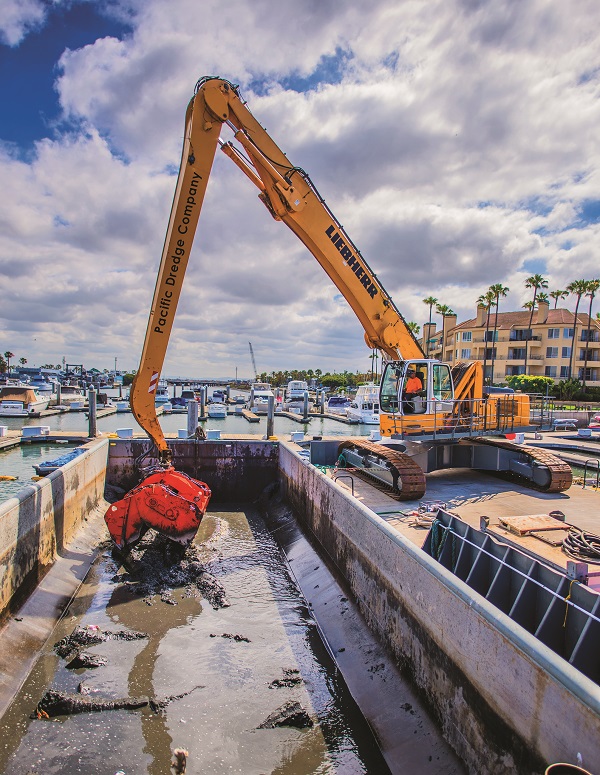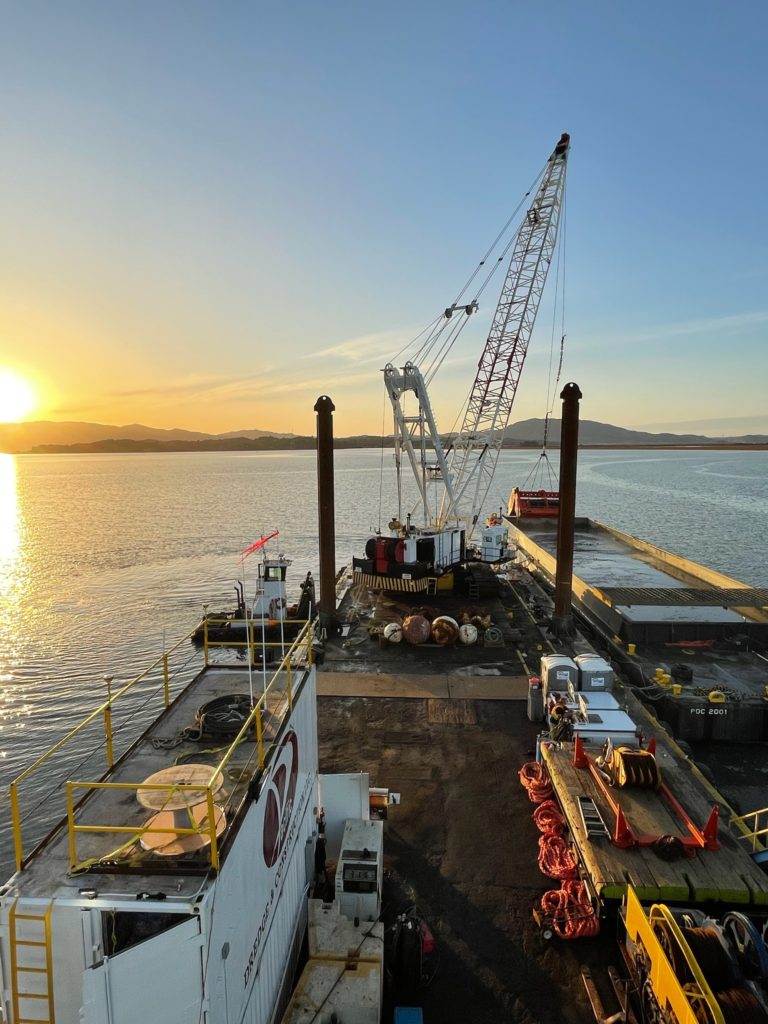Hey, buddy, need a dredge?
Dredging is the removal of material from within or near to a body of water. A marina may require dredging to maintain water depth for boats, or a port may wish to deepen ship channel and berths. Other dredging might be to replenish a beach or to remove contaminated material from a lake. The crews at Pacific Dredge and Construction have done all of these and operate both hydraulic dredges and mechanical dredges.
So, if you have a need for dredging, the first question that must be asked is which type of dredging? Mechanical or Hydraulic? Which is best for your job? The answer to that question--like the answer to so many of life’s questions-- is, “it depends.”
- Hydraulic refers to the water used. Any dredged material is mixed with water to create a slurry. The slurry is pumped through pipes. The mix of between water and sediments is very important as these need to be in suspension to travel throughout the pipe, typically thousands of feet away.
- As you would imagine, boulders and heavy gravel do not pump. They clog. Hydraulic dredging can only remove loose soils, sands, silt and light organic matter. Think of the muck at the bottom of a pond or the shifting sand of an ocean beach.
- The way this work is through a suction pipe lowered into the water by a “ladder”. This suction pipe can have a cutterhead at the end to scrap fines sediments typically compacted, then mix it with surrounding waters to create the slurry.
- It is very cost effective, requires less equipment and more environmentally friendly. Pumps do most of the work and they run as steady speeds and can be very quiet.
- Pumps can be electric, or diesel powered. Some agencies prefer hydraulic dredges for their minimal disturbance of the water column.
- Great to remove contaminated sediments as this system prevents dispersion of such in the nearby water sources.
- This method is used when sediments to be dredged are of good quality, environmentally friendly and can be reused for other purposes.
- Mechanic means machines. Heavy equipment such as barges w/ mounted cranes that use clamshell buckets to remove sediments from the bottom of a water source. Or barges with an excavator or even a long each excavator working from the shoreline. Typically, these buckets have specials outlets that allow water to be drained when bucket is lifted out of the water source, to reduce water accumulation when sediments are placed either on land or barges.
- Clamshell buckets can be used to remove loose sediments or compacted sand, gravel, rocks, and silt through heavy digging buckets. Excavators can cut through hard material and even swap to a grapnel for boulders or other large items.
- Clamshells are used to dredge at lower depths that usually hydraulic dredges are not able to reach. In some locations job requirements necessitate an “environmental” bucket which captures contaminated dredge material and brings it to the surface with minimal spillage.
- This dredging method is used when sediments to be removed are not suitable for reutilization or environmentally friendly. Both clamshell crane and excavator are capable of loading dump scows with dredged material so the material may be disposed of offshore.
Pacific Dredge and Construction has the SANDPIPER hydraulic dredge with a 20” cutterhead. It has proved to be very efficient when a hydraulic dredge is needed.
Our HORTON is a pocket-sized mechanical dredge, using a Liebherr 944 machine to work in marinas, around waterfront homes, in boat channels and other confined areas. Team it with pocket scows THING 1 and THING 2.
For bigger mechanical jobs we use the PDC 180. It has a duty-cycle Manitowoc 4600 crane that can be fitted with open clamshells or our 17-yard environmental bucket. It is best when teamed with twin 2000-yard scows PDC 2001 and PSC 2002.
Knowledge is power, they say. Knowing what type of dredge you need is a step toward getting it done. At PDC we have both the equipment and personnel to handle dredge projects large and small. Our hydraulic and mechanical dredge are ready for you.

